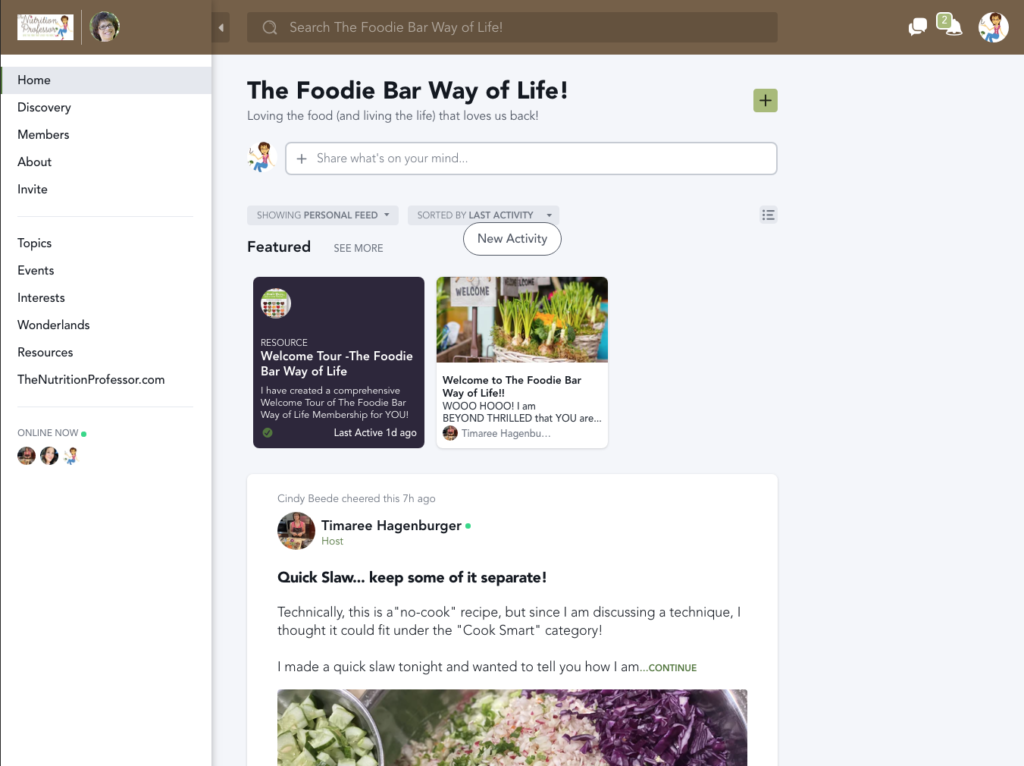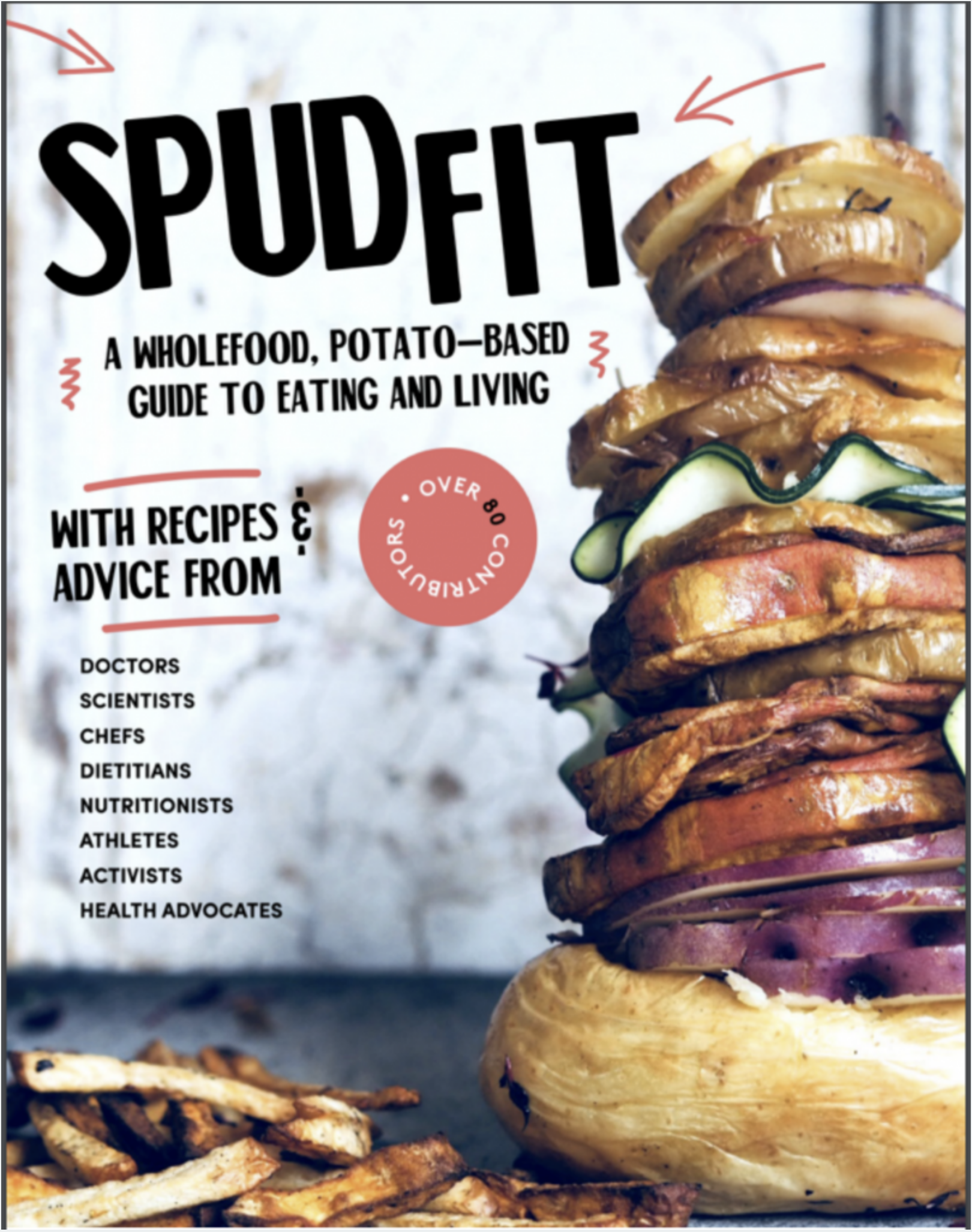Cauliflower is quite under appreciated, as most people don’t realize that it is one of the most versatile vegetables around or how many amazing ways eating it can benefit our health! After learning a little more about this phenomenal food and how to prepare it well, it wouldn’t surprised me if cauliflower gets added to your “go-to” veggie list.
Shop Smart:
Choose a tightly packed head of cauliflower, with a clean, creamy white exterior, thick green leaves and no flowers or large dark spots. The size of the cauliflower does not impact the quality or flavor, only the quantity available to enjoy! Cauliflower can be stored for up to a week in a paper bag or plastic produce bag in the fridge, with the stem side facing down, to reduce the likelihood that moisture will collect in the florets. If you are lucky enough to have any leftover cooked cauliflower, keep it in the fridge and enjoy it within 3 days.
Cook Smart:
Since cutting cauliflower will begin important enzymatic reactions, to maximize the nutrients available to your body, let cut pieces of cauliflower sit for at least 5 minutes before cooking. Don’t throw away the stem or leaves, as they are both edible and can be an excellent addition to soups, stocks and even stir-fries! I quickly cut up a head of rinsed cauliflower by shaving off any patches of discoloration with my knife, and then cutting the florets off of the stem, starting at the bottom and working my way up and around the stem. When it comes to cooking, less is best! Taste, texture and nutrient content of cauliflower are optimal when it is only cooked for a short amount of time. Boiling is not recommended, as it is very easy to overcook cauliflower this way, and some of the vitamins will be left in the cooking water. Lightly steamed cauliflower can be pureed with your favorite herbs and/or cooked potato as a velvety substitute for traditional, butter and cream laden mashed potatoes. Roasting cauliflower brings out a delectable nutty flavor that is perfectly paired with a sprinkle of finely chopped green or Kalamata olives or a drizzle of my Scallion Vinaigrette. Cauliflower can also be enjoyed raw or cooked in many other forms: florets to dip into hummus, guacamole or my Creamy Cilantro Lime Dressing, pulsed into rice-sized pieces and used in place of a grain like rice, bulgur or couscous, savory pancakes, or cut into large “slabs” and grilled on the BBQ or indoor grill!
Eat Smart:
Cauliflower is member of the cruciferous family, along with broccoli, cabbage, kale, collard greens, Brussels sprouts, well known for their potent, cancer-fighting power. In particular, cauliflower has been linked to preventing bladder, breast, colon, prostate and ovarian cancers, as it supports our body’s natural detoxification activities, immune, hormonal and antioxidant systems and our inflammatory response. Cauliflower is a great example of a “nutrient-dense” food, as it provides an enormous amount of phytonutrients, a big dose of vitamin C, as well as vitamin K, folate, pantothenic acid, B6, choline, manganese and even omega-3 fatty acids, all while being ridiculously low in kcalories (29 kcalories per cup)! Enjoying cauliflower may even prevent and possibly help reverse damage done to blood vessels and can help protect the lining of the stomach and reduce your risk of ulcers, by preventing bacterial overgrowth of H. pylori and reducing the “clinginess” of the bacteria to the stomach wall. Cauliflower is also a stellar source of fiber, 9 grams in every 100 kcalorie serving, so it is especially wonderful for people with diabetes or who are following a gluten-free diet, as many gluten-free grain products can be high in calories and low in fiber. Since your body is counting on you to include at least 1 1/2 to 2 cups of the cruciferous veggies, at least 3-5 times a week, be sure that cauliflower makes it into your shopping cart during your next trip to the market!
Scot’s Roasted Cauliflower
When I met my husband, he was not a “fan” of cauliflower and when I suggested it at the grocery store, his response was, “let’s just have broccoli.” However, once he tasted my roasted cauliflower, he actually started requesting it!
Ingredients
1 large head of cauliflower, cut into medium sized florets for even cooking
~1-2 TBSP salt-free seasoning (my favorite: Costco/Kirkland brand 21 organic seasoning blend)
1/2 tsp each of salt and pepper (to taste)
Procedure
Put the cauliflower florets in clean produce bag, add a splash of water, seasoning, salt and pepper. Shake well to coat the florets. Transfer to a baking sheet lined with foil or parchment paper and roast in ~375F oven until tender and golden tips appear. Enjoy as soon as they are cool enough to eat, as is, with a splash of vinegar (try white wine vinegar, champagne vinegar or rice wine vinegar) or topped with Scallion Vinaigrette Dressing (my family’s favorite).
Timaree Hagenburger, a registered dietitian, certified exercise physiologist with a master’s degree in public health, is a nutrition professor at Cosumnes River College and sought after speaker. She is so excited about the Plant-Based Nutrition and Sustainable Agriculture certificate program that she and her colleague started there, and also conducts local events, corporate wellness work, has a regular segment on California Bountiful TV, is a frequent podcast guest, and published her innovative and practical cookbook – The Foodie Bar Way: One meal. Lots of options. Everyone’s happy. available at www.FoodieBars.com Find details about Timaree’s upcoming events (cooking demos, book signings and talks about the incredible power you yield with your fork!), and if you missed any of her newspaper columns, podcast interviews or TV appearances, you can find them here at https://www.thenutritionprofessor.com/


 Order and learn more at www.FoodieBars.com
Order and learn more at www.FoodieBars.com

 This is a first for me... Some of MY recipes are part of a rock star compilation cookbook put together by Andrew Spud Fit Taylor!! Order it today!
This is a first for me... Some of MY recipes are part of a rock star compilation cookbook put together by Andrew Spud Fit Taylor!! Order it today!